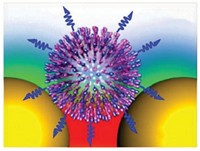Advertisement
Grab your lab coat. Let's get started
Welcome!
Welcome!
Create an account below to get 6 C&EN articles per month, receive newsletters and more - all free.
It seems this is your first time logging in online. Please enter the following information to continue.
As an ACS member you automatically get access to this site. All we need is few more details to create your reading experience.
Not you? Sign in with a different account.
Not you? Sign in with a different account.
ERROR 1
ERROR 1
ERROR 2
ERROR 2
ERROR 2
ERROR 2
ERROR 2
Password and Confirm password must match.
If you have an ACS member number, please enter it here so we can link this account to your membership. (optional)
ERROR 2
ACS values your privacy. By submitting your information, you are gaining access to C&EN and subscribing to our weekly newsletter. We use the information you provide to make your reading experience better, and we will never sell your data to third party members.
Analytical Chemistry
Nanotube array snags viruses
Device enriches and concentrates viruses from field samples, helping with surveillance for emerging infectious disease outbreaks
by Bethany Halford
October 10, 2016
| A version of this story appeared in
Volume 94, Issue 40
To keep one step ahead of deadly viral outbreaks, scientists track known viruses and identify emerging viruses that haven’t been seen before. But this type of surveillance can falter when field samples contain only small amounts of a virus and modern analytical techniques fail to detect it, so the threat goes unnoticed. Scientists at Pennsylvania State University, led by Siyang Zheng and Mauricio Terrones, report a device that can enrich viruses in field samples, thanks to an array of aligned, nitrogen-doped multiwalled carbon nanotubes, or N-MWCNTs (Sci. Adv. 2016, DOI: 10.1126/sciadv.1601026). The nanotube array acts as a filter for a solution of the prepared sample, allowing nontarget material to flow through while trapping virus particles and concentrating them by at least 100 times. Then the virus can be identified with next-generation sequencing. With the device, the researchers identified an emerging avian influenza virus strain as well as a novel virus strain found in turkeys. Because neither the device nor the sequencing identification method requires any knowledge of the virus within the field sample, the researchers believe the combination represents a powerful approach to discovering viruses and could help scientists get the upper hand on viral infectious diseases before they run rampant.





Join the conversation
Contact the reporter
Submit a Letter to the Editor for publication
Engage with us on Twitter